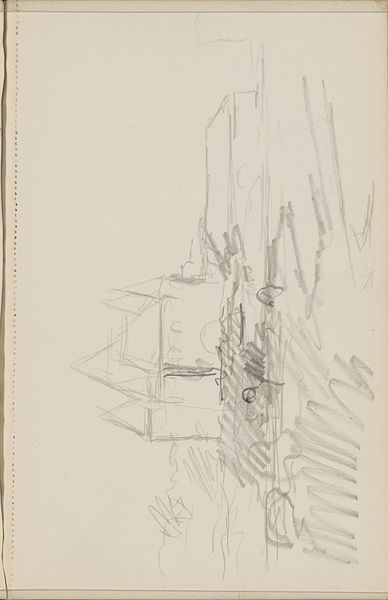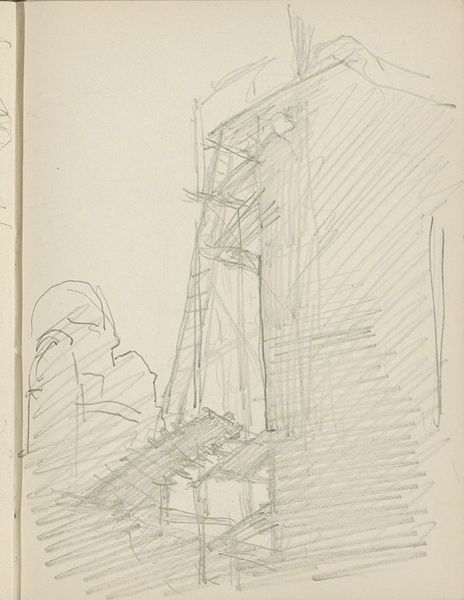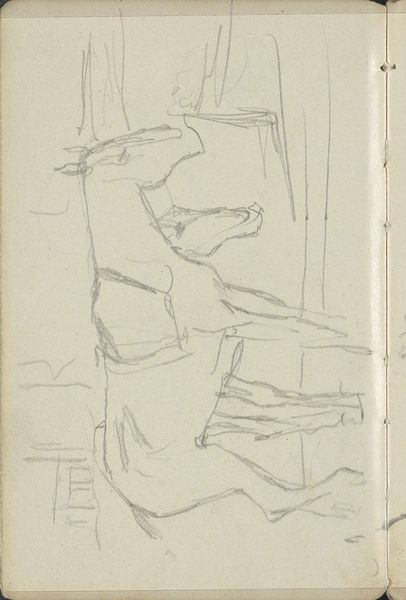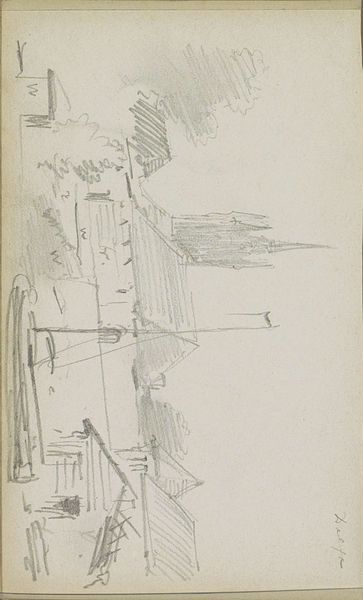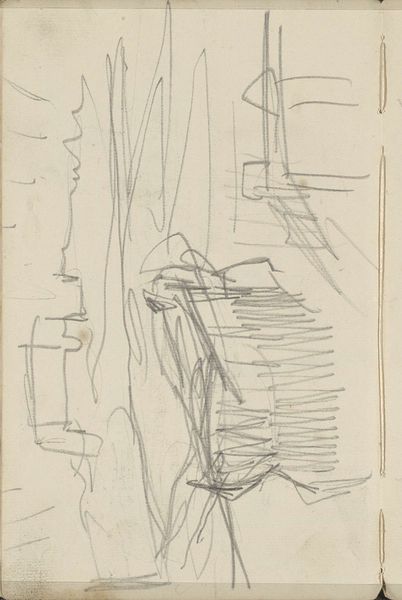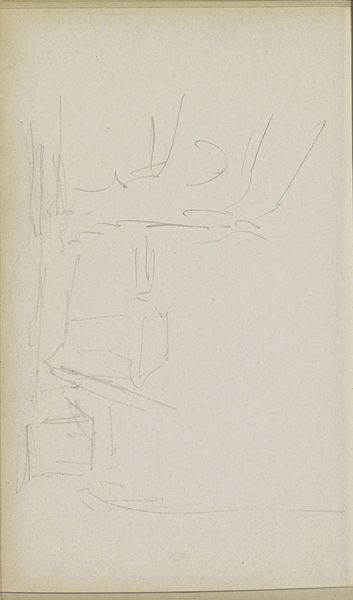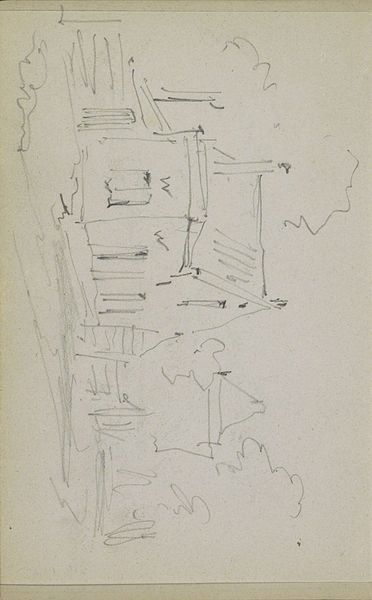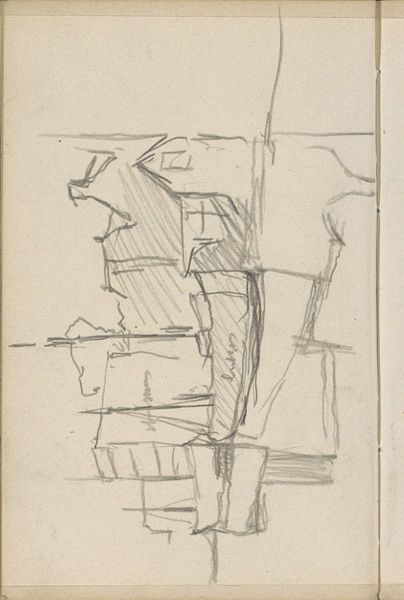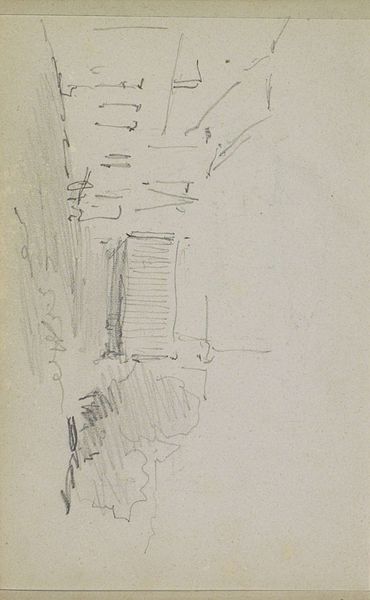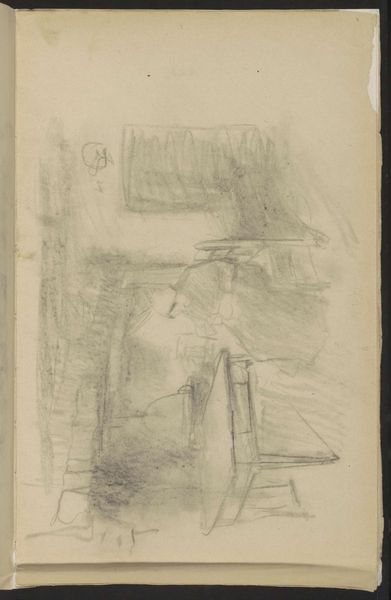
drawing, pencil
#
drawing
#
pencil
#
line
#
cityscape
#
building
Copyright: Rijks Museum: Open Domain
Curator: Let’s discuss Reijer Stolk’s drawing, "Toren in de steigers," likely created sometime between 1906 and 1945. It's currently held here at the Rijksmuseum. Editor: My first impression is fragility, a delicate rendering of something quite massive. The light pencil strokes seem to barely contain the form. Curator: I see it as representing the societal project of construction, the potential inherent in rebuilding but it also makes me consider themes of labor and impermanence. Scaffolding signifies transformation and often points to changing social structures, wouldn't you say? Editor: Absolutely. And when we consider the materials involved—wood, rope, the labor of erecting and dismantling that temporary structure—it makes you think about the unseen work required to construct our world. The line style is minimal. One would wonder if the support itself, the paper, was recycled, common, of cheap manufacture. It points us to conditions, and possibly an economic relationship that Stolk had to making sketches like these. Curator: Indeed. Consider the potential context of those dates: the shadow of two World Wars hangs over this piece. Construction and deconstruction become politically loaded concepts in that light. It challenges a glorification of labor by subtly acknowledging its connection to destructive forces, too. Editor: The absence of people within the sketch reinforces that sense of work as idea more than practice. Who were the people involved, and were they displaced in other projects, or left more exposed, and alienated after its erection? Were new social orders or policies introduced along with it? And whose orders were those? Curator: By reducing the tower and its scaffolding to skeletal lines, Stolk directs our attention to the abstract, almost ghostly framework behind progress, hinting at the costs associated with ambitious constructions and large-scale social change. The very fact the tower is incomplete evokes an extended, even eternal condition of becoming, of unrealized potential. Editor: Precisely. It shows us how things are assembled in this time, yet suggests these orders and values will ultimately become obsolete with time, circumstance, and exposure. Curator: It’s fascinating how a simple pencil sketch can spark such complex considerations about history, labor, and the socio-political context of construction. Editor: A potent reminder that the most unassuming materials can contain multitudes.
Comments
No comments
Be the first to comment and join the conversation on the ultimate creative platform.
